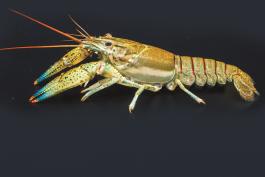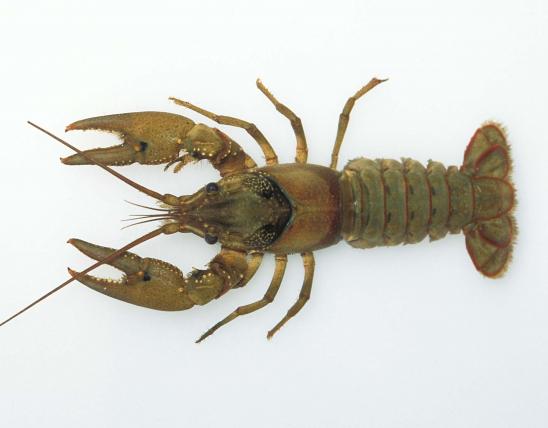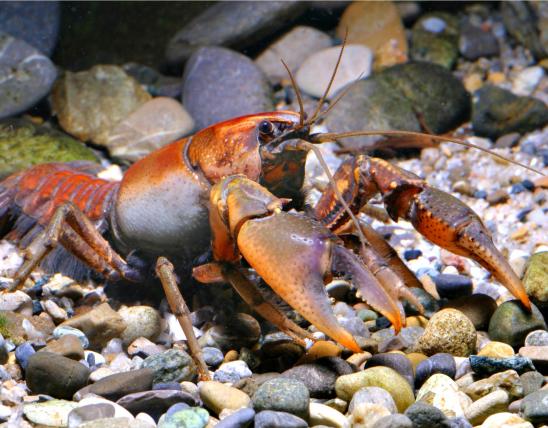
The water nymph crayfish is greenish brown or brown, with no prominent markings. The pincers are green or blue green and are usually tipped with orange; the pincers of adults have white or yellow knobs. Paired dark blotches run lengthwise along the abdomen. The rostrum (pointed, noselike structure between the eyes) has conspicuous notches or spines near the tip.
Similar species: The virile (or northern) crayfish is also found in the same range; it is very similar and more abundant. Its overall color is reddish brown or green (while the water nymph crayfish is greenish brown or brown).
Length: to 5 inches or more.

This species is wide-ranging in Missouri and occurs in parts of central Missouri as well as near the western and eastern borders; it awaits further study to determine its distribution in our state. It is also found in the Great Plains in Kansas, Oklahoma, and Texas, and in Arkansas.
Habitat and Conservation
This species is normally found in streams but can also be found in a wide variety of habitats, including ponds.
Food
Crayfish are generally omnivores, eating a wide variety of plant and animal materials.
Life Cycle
This species probably follows the typical crayfish cycle of mating in the fall, laying eggs in the spring, and the hatching of young by the beginning of summer. Crayfish must periodically molt their rigid, shell-like exoskeletons in order to grow. The new shell develops beneath the old one over a period of weeks. Then, the old shell splits on the back, between the carapace and abdomen, and the entire body is withdrawn through this opening. It takes about a week afterward for the new shell to harden.
Human Connections
The species name of this crayfish, nais, is a form of the word "naiad," the name used in Greek and Roman mythology for the various water nymphs — minor deities of lakes, rivers, and other aquatic places. The species was named in 1885 by Walter Faxon (1848–1920), who contributed to our knowledge of birds as well as crayfishes. Faxon, like most other scientists of his time, had received an education that included plenty of Classical literature. As a result, many scientists of that time used Greek and Roman references, often in a fanciful or poetic way, in naming plants and animals.
Walter Faxon was honored in 1905 when the zoologist Arnold Edward Ortmann created the genus name Faxonius, which this species was transferred to in 2017.
Ecosystem Connections
Crayfish eat nearly anything, including microscopic plants and animals, living and dead algae and leafed plants, and living and dead animal matter (mostly insects). Meanwhile, more than 230 animal species in North America eat crayfish, including other crayfish, fish, birds, reptiles, amphibians, and mammals (even humans).



























